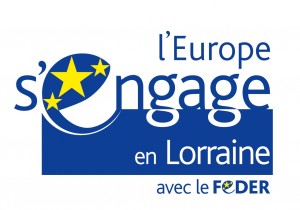Clustering
There is a general clustering mechanism in Grew that can be used in various contexts to divide a set of matchings produced by a request on a corpus into a number of subsets (a partition) according to some criteria.
Where it can be used?
- In Grew-match, below the main textarea where the request is written, it is possible to describe either one or two clustering items
- With the command line argument, in
greporcountmode, clustering can be performed. Details and examples can be found here forgrepand here forcount - Using Python library Grewpy, in the functions
Corpus.countandCorpus.search
Clustering with a key
Clustering on a node feature
With the clustering key X.f, the matchings are clustered following the value of the feature named f for the node X present in the (matching part of the) main request.
If the feature is not defined for some matchings, a cluster with the value __undefined__ is added.
Examples
- List lemmas of auxiliaries in UD_Polish-LFG
- List
VerbFormofVERBwithoutnsubjin UD_German-GSD - Find the huge number of
formassociated to the lemma saada in UD_Finnish-FTB
Clustering on a edge feature
With the clustering key e.f, the matchings are clustered following the value of the feature named f for the edge e present in the (matching part of) main request.
If for some matchings, the feature is not defined, a cluster is added with the value __undefined__.
Example
Clustering on the full label of an edge
With the clustering key e.label, the matchings are clustered according to the full label of edge e present in the (positive part of the) main request.
NB the way the label value is reported depends on the configuration used.
Example
Clustering on an edge length
The clustering key e.length makes clusters according to the length of the edge e;
the clustering key e.delta makes clusters according to the relative positions of the governor and the dependent of the edge e.
Examples
- Observe the length of the
amodrelation in UD_Korean-PUD - Observe the relative positions of
nsubjrelated tokens in UD_Naija-NSC
Clustering on distance between nodes
🆕 in Version 1.16. Similarly to the new syntax for request, it is possible to cluster on the distance between two nodes:
Note that this is partly redondant with the previous point (clustering on an edge length), but it can also be used on a pair of nodes that are not connected. For example, you can cluster on the relative distance between a subject and an object that depend on the same governor:
Clustering of continuous numeric features
As suggested in #28, in case of continuous numeric feature, it is sensible to cluster by value intervals.
X.feat[gap=g]will cluster the values of X.feat by packs of size gX.feat[gap=g, min=a, max=b]will cluster the values between a and b by pack of size g, with two packs for all values < a and > b.
Example
The Naija treebank has a version with prosodic information.
on UD_Naija-NSC with clustering key S.Duration[gap=100] and request:
pattern { S [SylForm = "wO~", Duration] }
There are 8 clusters, named [0, 100[, [100, 200[, … [700, 800[.
Clustering on successive feature names
The feature name ExtPos is mainly used when the external POS is different from the regular upos.
So it may be useful to be able to report the value of ExtPos if it exists and the value of upos otherwise.
This is possible with the clustering key X.ExtPos/upos.
Example with ExtPos
On UD_French-GSD, when searching for POS of a dependent of the case relation with the request pattern { X -[case]-> Y }, the clustering key Y.upos reports 8 clusters
(use the Count button to see all clusters) and the clustering key Y.ExtPos/upos reports the more regular set of 3 clusters
.
Example with corrected features
This kind of clustering key can also be useful with features Correct{feature} (see UD guidelines).
For instance on UD_French-GSD, with the request
pattern { X -[amod]-> Y ; X.Gender <> Y.Gender}
and the two clustering keys X.CorrectGender/Gender and Y.CorrectGender/Gender
, we can observe in more detail the Gender agreement between two nodes related by amod.
Clustering by relative order of nodes
With a clustering key X1#X2#X3 where X1, X2 and X3 are nodes from the pattern part of the request, the occurrences are clustered according to the relative order of the nodes and clusters are identified by X1 << X2 << X3, X2 << X1 << X3… This can be used with any number of nodes.
Example: Verb, Subject, Object ordering
On UD, with the request;
pattern {
V[upos=VERB];
V -[nsubj]-> S;
V -[obj]-> O;
}
and with the clustering key V#S#O, we can observe the occurrences of the 6 possible orders SVO, SOV…
on UD_Latin-Perseus.
Example: positions of copula and adposition sharing the same head
pattern {
HEAD [];
COP [upos=AUX]; HEAD -[cop]-> COP;
ADP [upos=ADP]; HEAD -[case|mark]-> ADP;
}
on UD_French-GSD with the clustering key HEAD#COP#ADP.
Clustering on how two nodes are related (or not)
-
With the clustering key
X -> Y, the occurrences are clustered according to the relation fromXtoY; a cluster named__none__collects the cases where there is no relation fromXtoY. If there is more than one such relations, another cluster__multi__is added. Note that the__multi__cluster never appears in dependency syntax, but it may appear in other contexts such as enhanced UD or semantic graphs. -
With the clustering key
X <-> Y, the occurrences are clustered according to the relation betweenXandY(no matter which direction); if the direction is fromYtoX, the relation name is prefixed with minus sign like-nsubjor-mark:rel. A cluster called__none__contains the cases where there is no relation betweenXandY. If there is more than one such relation, another cluster__multi__is added.
Annotation of a bigram DET NOUN
With a clustering key Y -> X and the pattern:
pattern { X [upos=DET]; Y [upos=NOUN]; X < Y }
we can observe how the bigram is annotated:
on UD_German-GSD.
Annotation of a bigram NOUN NOUN
With a clustering key X <-> Y and the pattern:
pattern { X [upos=NOUN]; Y [upos=NOUN]; X < Y }
we can observe how the bigram NOUN-NOUN is annotated:
on UD_Chinese-GSD or
on bUD_English-GUM (bUD is the version of the treebank whitout the enhanced dependency layer).
Clustering on the metadata of the sentences
[🆕 1.18.0] With a clustering key meta.f, the results will be clustered acccording to the value of the metadata f of the each matched graph.
Example:
Clustering with key tuples
[🆕 1.19.0] Any tuple of clustering keys, as defined above, can be used.
The clusters are then all possible value tuples.
- List triples (upos of governor, dependency relation, upos of dependent) in UD_English-LittlePrince:
- Cases of inconsitencies of couples (Gender, Number) in UD_French-ParTUT:
pattern { X -[amod]-> Y; X[Gender, Number]; Y[Gender, Number] } without { X.Number = Y.Number; X.Gender = Y.Gender }
Clustering with a sub-request (whether)
A whether sub-request contains a list of clauses (as in pattern, without or with constructions).
The set of occurrences is split in two subsets:
- one tagged
Nocorresponds to the subset of occurrences where thewhethersub-request cannot be fulfilled (thewhetheris interpreted like awithout) - one tagged
Yesis the complementary of theNosubset and so, corresponds to the occurrences where the sub-request can be matched (thewhetheris interpreted like awith)
Note that no curly brackets are needed in the whether text area (see examples below).




